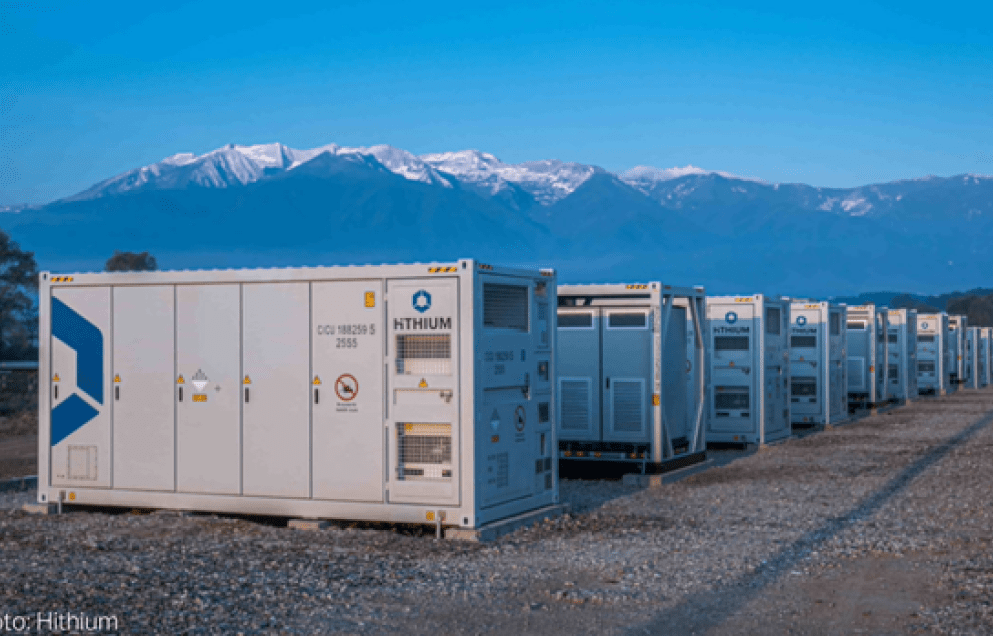Battery Energy Storage Systems: Comprehensive Risk & Insurance Newsletter

Technology Overview
Battery Energy Storage Systems (BESS) are advanced technologies designed to store electrical energy for later use. They play a pivotal role in balancing supply and demand, integrating renewable energy sources, and enhancing grid reliability. Most BESS utilize lithium-ion batteries due to their high energy density and efficiency. A typical system includes battery modules, power conversion systems, and intelligent control units that manage charging and discharging cycles.
Why BESS Matters
The integration of intermittent renewable energy sources like solar and wind into the grid creates challenges in maintaining consistent power supply. BESS mitigates these issues by storing excess energy and releasing it during peak demand. They also provide ancillary services such as frequency regulation, voltage support, and backup power during outages.
Major Risk Categories
1. Fire & Thermal Runaway
Thermal runaway is a critical risk in lithium-ion battery systems. It occurs when a cell's temperature increases uncontrollably due to internal short circuits, overcharging, or mechanical damage. This leads to the release of flammable gases and can ignite adjacent cells, causing a chain reaction.
- Subcategories of fire risk include:
- Internal cell defects
- Poor thermal management
- Inadequate fire suppression systems
Real-world Example: The Moss Landing Energy Storage Facility in California experienced a fire due to thermal runaway, prompting a reevaluation of fire suppression protocols and battery spacing.
Mitigation Strategies:
- Use of fire-resistant enclosures
- Online condition monitoring systems
- Gas detection with automatic purge, deflagration, venting sized from test data, and responder access protocols
- Installation of multi-layered fire suppression systems
- Continuous thermal monitoring via Battery Management Systems (BMS)
2. Component Failure
Subcategories include:
- Electrical faults
- Software bugs in control systems
- Mechanical wear and tears
Example: A utility-scale BESS in South Korea experienced inverter failure due to poor integration, leading to system downtime and financial losses.
Mitigation Strategies:
- Rigorous component testing
- Preventive maintenance schedules
- Redundant system design
3. Cybersecurity Threats
BESS systems are increasingly managed via cloud-based platforms, making them vulnerable to cyberattacks. Threats include unauthorized access, data breaches, and manipulation of control commands.
Subcategories include:
- Network intrusion
- Malware attacks
- Insider threats
Example: A simulated attack on a BESS control system demonstrated how hackers could override safety protocols, causing overheating and shutdown.
Mitigation Strategies:
- Use of encrypted communication channels
- Regular security audits
- Implementation of intrusion detection systems
4. Environmental Hazards
Environmental risks arise from improper handling, leakage, or disposal of batteries. Toxic chemicals such as lithium, cobalt, and electrolyte solvents can contaminate soil and water.
Subcategories include:
- Chemical leakage
- Improper disposal
- Flood-induced contamination
Example: A BESS facility in Southeast Asia faced fines after battery leakage contaminated nearby agricultural land.
Mitigation Strategies:
- Use of containment barriers
- Compliance with hazardous waste regulations
- Emergency spill response plans
5. Natural Disasters
Natural disasters such as floods, earthquakes, and wildfires pose significant risks to BESS infrastructure. These events can cause physical damage, disrupt operations, and trigger secondary hazards like fires.
Subcategories include:
- Seismic activity
- Flooding
- Extreme temperatures
Example: A BESS installation in Japan was damaged during an earthquake, leading to a prolonged outage and costly repairs.
Mitigation Strategies:
- Site selection based on hazard maps
- Structural reinforcement
- Emergency shutdown protocols
6. Performance Uncertainty
Faster than expected degradation affecting contracts.
Subcategories:
- System underperformance
- Rack imbalance
- Manufacturing defect leading to lower efficiency
Example: None reported
Mitigation Strategies:
- Performance warranties
- Liability tied to warranty
- Battery Analytics Software
Insurance Implications
Insurance coverage for BESS must address a wide range of risks:
- Property Damage: Covers physical damage to BESS components.
- Business Interruption: Protects against revenue loss from system downtime.
- Cyber Liability: Covers financial losses from cyberattacks.
- Environmental Liability: Manages costs from contamination events.
- Third-Party Liability: Covers injury or damage caused to external parties.
Regulatory Landscape
The Central Electricity Authority (CEA) has proposed comprehensive safety standards under the First Amendment to the Safety and Electric Supply Regulations, 2025. Chapter X-A prescribes safety requirements for BESS summarised below:
- Fault Tolerance: Systems must tolerate two independent faults without catastrophic failure.
- Battery Management System (BMS): Mandatory monitoring of voltage, temperature, and current at cell/module level. Some of the best safety functions as mentioned below are in-built within the battery management system-
- High cell temperature trip
- Thermal runaway trip
- Racks switch fail to trip
- Inverter/charger fail to trip
- Fire Safety: Water-based suppression systems required for containers ≥200 kWh.
- Explosion-Proof Containers: With forced ventilation and automated louvers.
- Minimum Distances: If the distance is less than 6 meters, a 1-hour fire-rated barrier must be installed between the units.
- Emergency Protocols: Manual stops, signage, lighting, and third-party fire audits.
- Security Measures: CCTV, fencing, and trained fire safety personnel.
Case Studies
- Moss Landing Incident (California): A fire caused by thermal runaway highlighted the need for robust fire suppression and spacing protocols.
- APS Surprise Incident (Arizona): Reignition of fire post-suppression emphasized the importance of oxygen management and BMS integration.
Risk Management Best Practices
- Spatial Separation: Maintain minimum six feet between battery containers.
- Battery Management Systems (BMS) & online condition monitoring systems: Will monitor battery room temperature and voltage, temperature, and current to trigger protective actions.
- Routine Maintenance: Conduct regular inspections to detect early signs of failure.
Summary
As BESS technology evolves, insurers are adopting data-driven risk assessments and offering tailored policies. Operators who implement robust safety measures and leverage AI-based monitoring systems are likely to benefit from reduced premiums and enhanced insurability. The industry is poised for exponential growth, and proactive risk management will be key to sustainable deployment.
Author
